Access affordable fibroid removal surgery in India, performed by skilled gynecologists using advanced techniques. Benefit from high-quality care without the high cost.
Recovery Time
5 days
Success Rate
98%
Hospital Stay
2 Days
Treatment Type
Surgical
Home Treatments Gynecology and Obstetrics Fibroid Removal Surgery (Myomectomy)
Are you worried about the high costs of fibroid removal surgery and trying to find affordable, high-quality care?
Many patients face this challenge, but India offers an excellent solution. With world-class hospitals, highly experienced surgeons, and advanced techniques like laparoscopic and minimally invasive surgery.
India provides outstanding healthcare services compared to many Western countries.
This advanced approach allows you to receive quality treatment without financial stress.

Fibroids are non-cancerous growths in the uterus. While you might not need surgery if they do not cause any symptoms, surgery becomes necessary if your fibroid symptoms include:
Additionally, surgery can be an option if you wish to get pregnant in the future, as fibroids can increase the risk of miscarriage and other complications during pregnancy.
The cost of fibroid removal surgery generally includes the surgeon's fees, hospital stay, operating room use, and nursing care. Additional expenses can cover diagnostic tests, medications, and follow-up appointments. Costs are based on the hospital and city, offering options to meet different needs. Here’s a clear breakdown of the typical costs involved:
Cost Component | Details | Estimated Cost in USD |
Pre-operative Consultation and Diagnosis | Consultations, X-rays, MRI scans, blood tests | 400 USD |
Surgery Costs | Includes surgeon fees, type of surgery, and hospital stay | 3800 USD |
Rehabilitation and Follow-up | Physiotherapy sessions, medications, supportive devices, and follow-up visits | Variable by procedure |

Country | Cost Structure |
India | 3800 USD |
United States | 15000 - 25000 USD |
Germany | 8000 - 12000 USD |
Turkey | 5000 USD |
◾Key Takeaways
✅ Affordable Treatment Costs: Affordable treatment options for fibroid removal surgery in India provide quality care at significantly lower costs compared to many Western countries. Patients benefit from expert surgeons and advanced facilities. The best part is that you can save up to 60% to 80% on medical expenses in India without compromising the quality of care.
✅ Advanced Medical Technology: India offers advanced medical technology for fibroid removal surgery, utilizing minimally invasive techniques like laparoscopic surgeries and robotic-assisted surgeries. These methods improve care, reduce scarring, and quicker recovery, ensuring patients experience effective treatment with the latest surgical innovations.
Fibroid Removal Surgery (Myomectomy) cost
Treatment Name
Estimated Cost
Myomectomy - Fibroids Removal 3800 USD
India has highly specialized, internationally trained surgeons skilled in advanced techniques like robotic-assisted and minimally invasive surgeries, ensuring high success rates and patient comfort.
Beds: 539
New Delhi
Beds: 230
New Delhi
Beds: 710
New Delhi
Beds: 650
New Delhi
Beds: 191
New Delhi
Beds: 310
New Delhi
Beds: 299
Gurugram
Beds: 380
New Delhi
Beds: 402
New Delhi
Beds: 1300+
Gurugram
Beds: 1000
New Delhi
Beds: 450
Faridabad
Beds: 675
New Delhi
Beds: 500
New Delhi
Beds: 400+
Faridabad
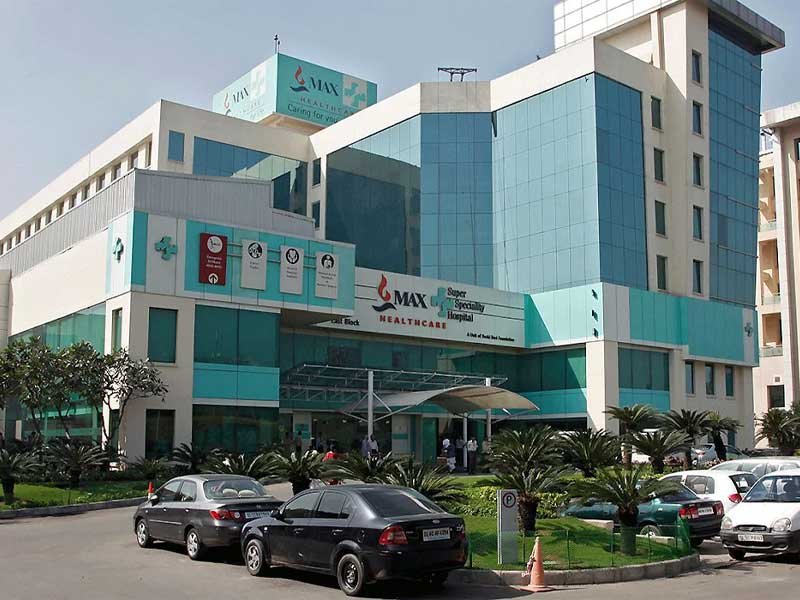
Max Super Speciality Hospital, Saket
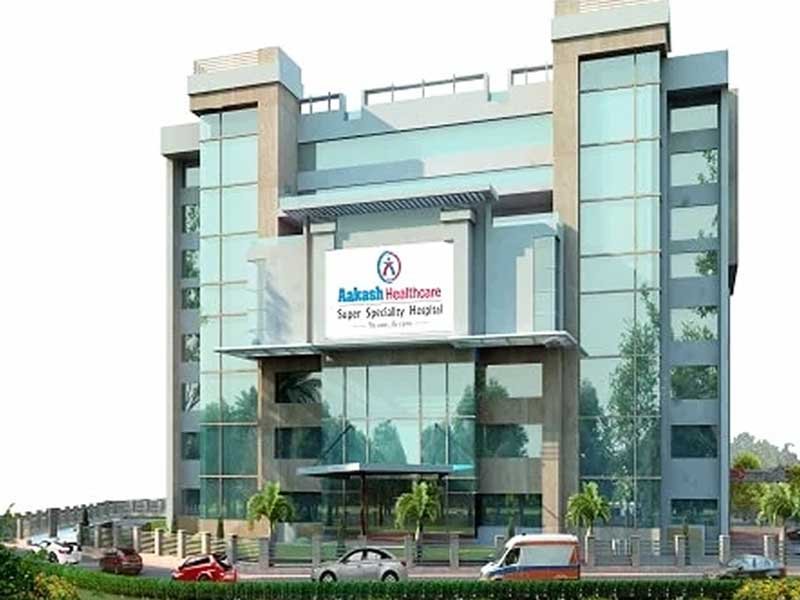
Aakash Healthcare Super Speciality Hospital
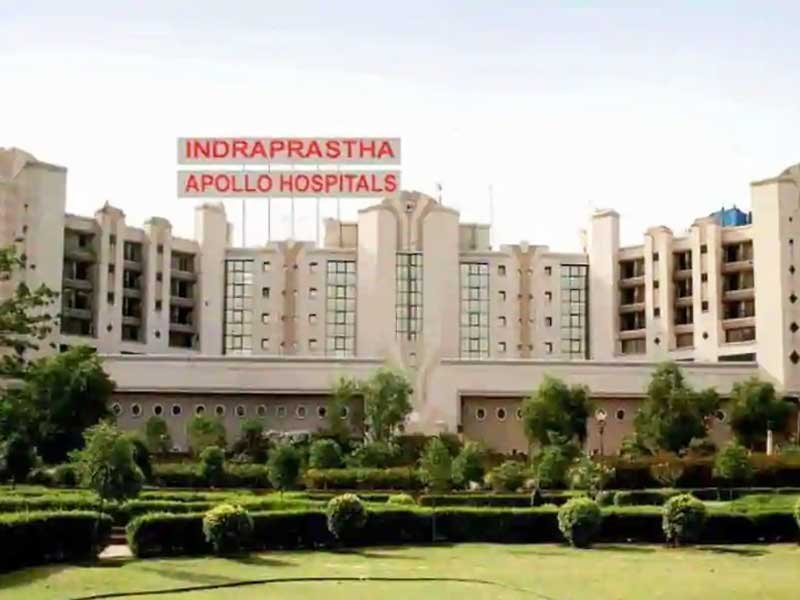
Indraprastha Apollo Hospital
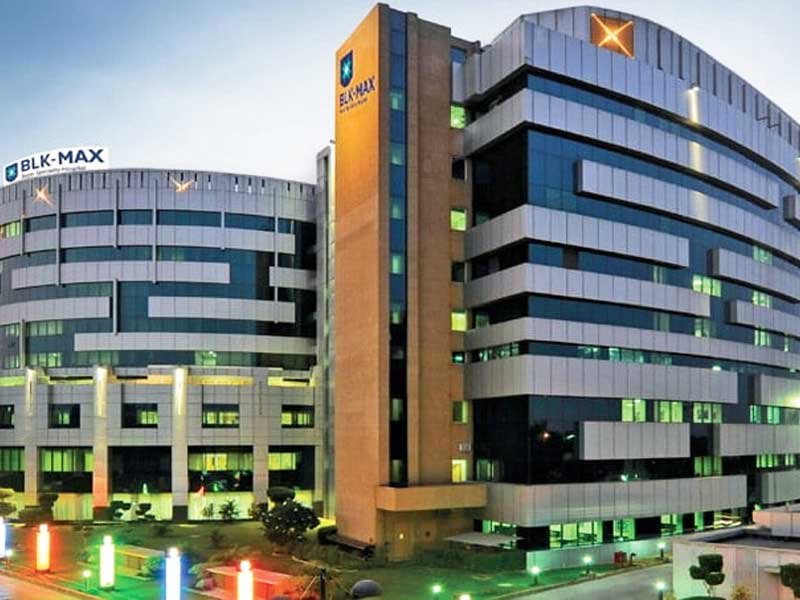
BLK Max Super Speciality Hospital
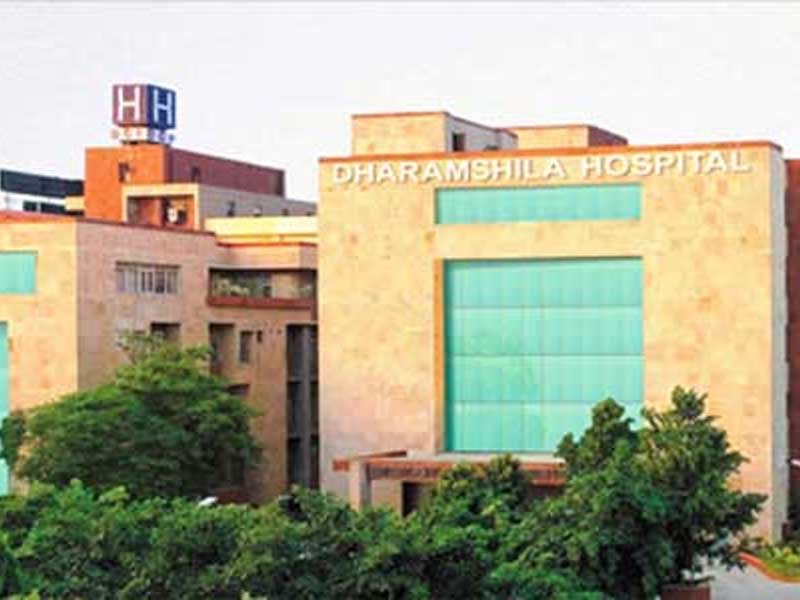
Dharamshila Narayana Superspeciality Hospital
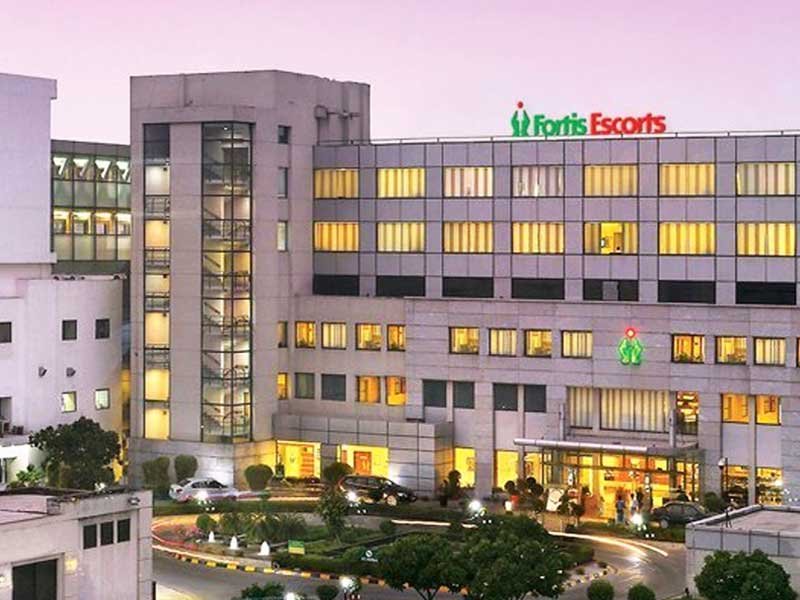
Fortis Escorts Heart Institute
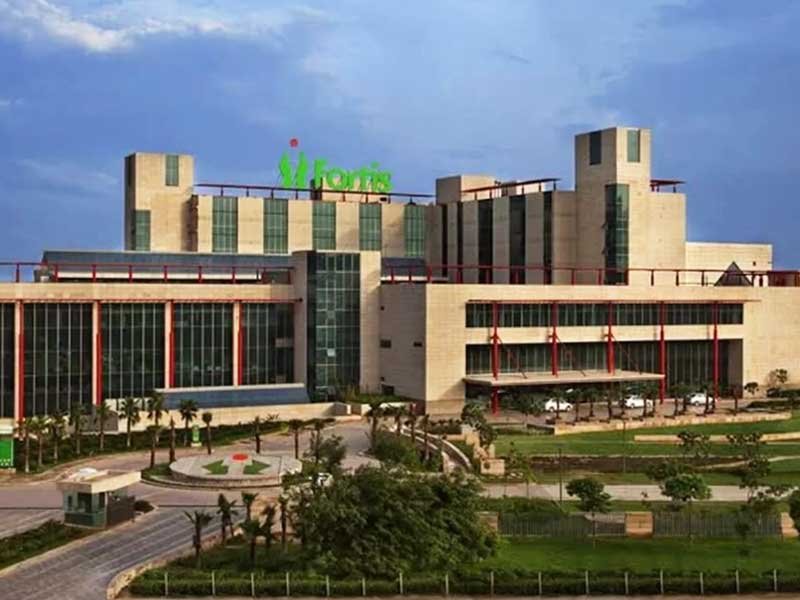
Fortis Memorial Research Institute
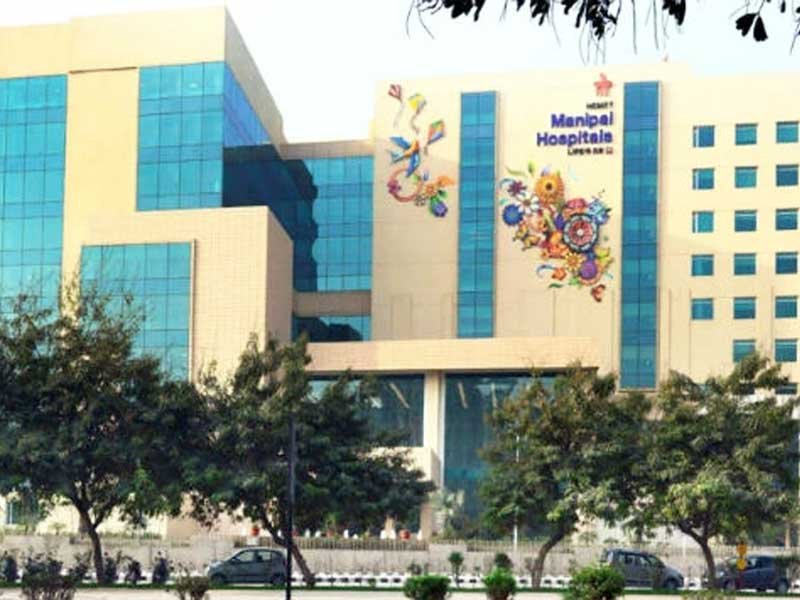
Manipal Hospital Dwarka
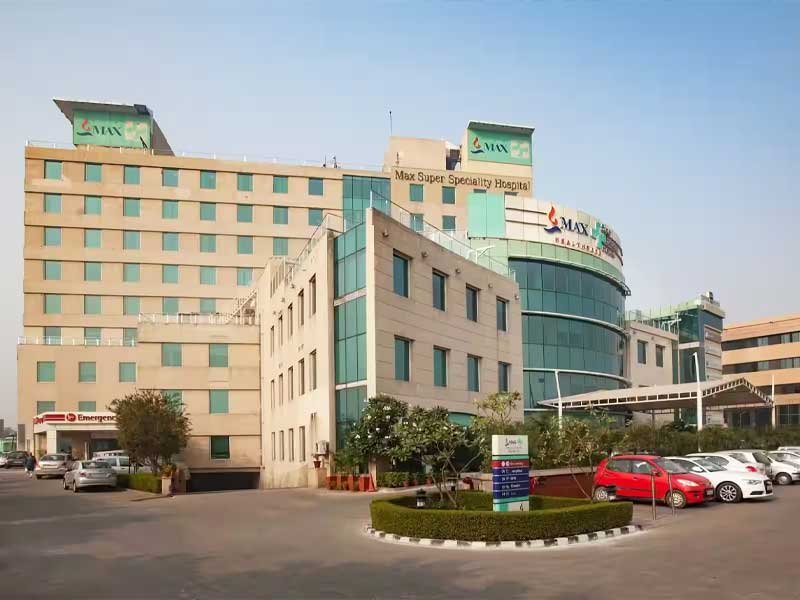
Max Super Speciality Hospital Shalimar Bagh
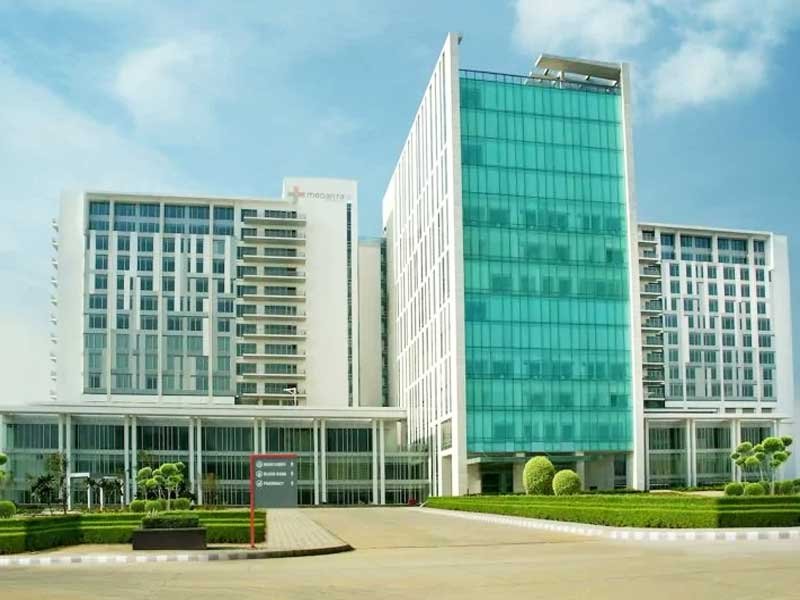
Medanta - The Medicity Hospital

Moolchand Kharaiti Ram Hospital

Sarvodaya Hospital
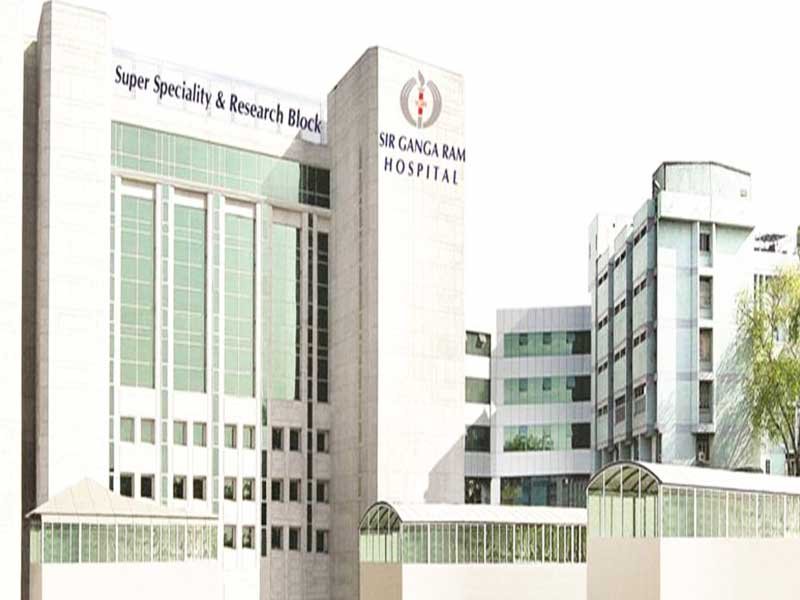
Sir Ganga Ram Hospital
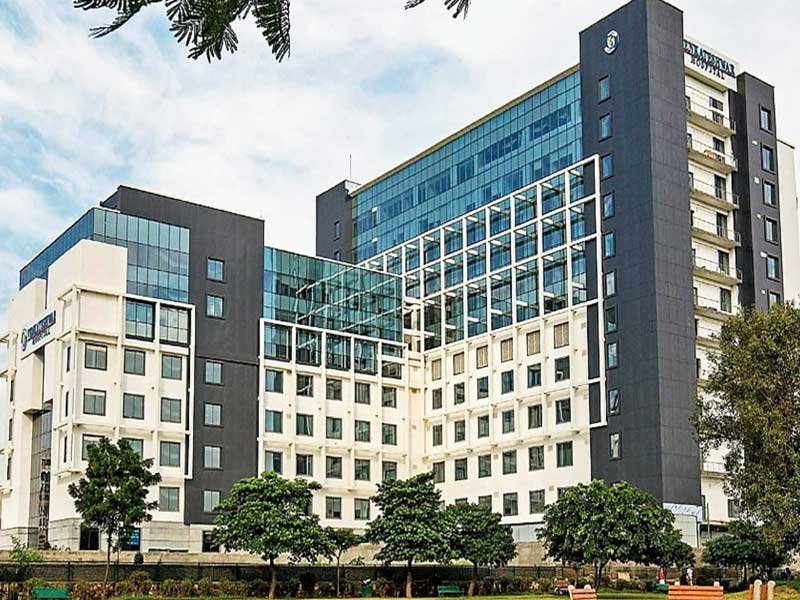
Venkateshwar Hospital
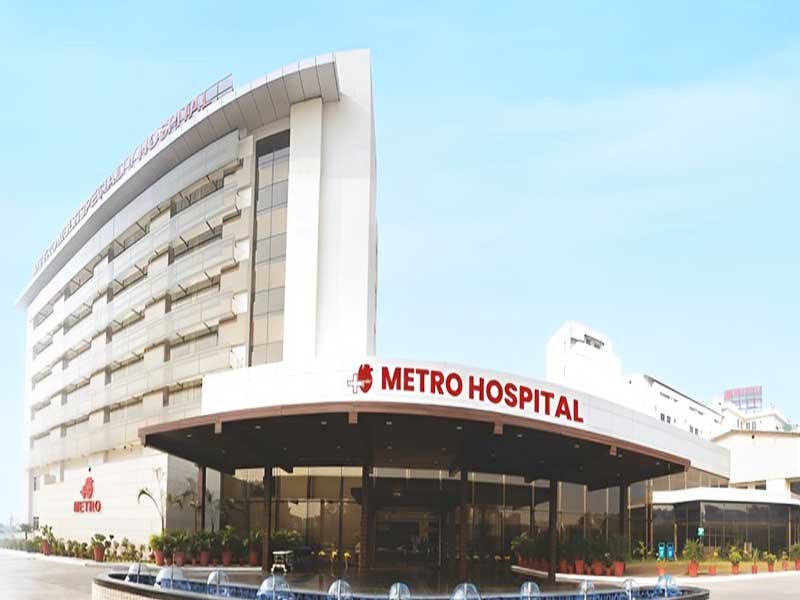
Metro Heart Institute with Multispecialty
These hospitals are renowned for their advanced fibroid removal surgeries. They are accredited by JCI or NABH and are qualified with the latest medical technologies and modern treatment options, ensuring high-quality care.

Radiofrequency ablation is a minimally invasive treatment for new fibroids, preserving the uterus. It uses high temperatures to target and shrink fibroids, which are then absorbed by the uterine tissue, leaving the surrounding tissue and the ovum intact.
Uterine artery embolization is a non-surgical option for patients wishing to keep their uterus. This procedure uses drugs to block blood flow to the uterus and fibroids, reducing their size. It offers a shorter hospital stay than hysterectomy or myomectomy, but is not suitable for pregnancy or uterine infections.
Myolysis is a minimally invasive treatment that uses focused energy, like heat, laser, or MR-guided ultrasound, to destroy fibroids.
An abdominal myomectomy involves removing fibroids through a lower abdominal incision. The uterine muscle is then reconstructed with stitches. Performed under anesthesia, it may require a blood transfusion due to bleeding. Most patients stay in the hospital for two nights, with a recovery period of four to six weeks.
Robotic myomectomy, a type of laparoscopic procedure, often leads to less blood loss, fewer complications, and a quicker recovery than open surgery, it may take longer and cost more. For large fibroids, open myomectomy is preferred, while sub-mucosal fibroids may require hysteroscopic myomectomy.
Necessary Diagnostic Tests
Your doctor may suggest several tests to assess the condition of your fibroids and effectively plan your surgery.
Tests | Description |
Ultrasound | This test uses sound waves to create an image of your uterus, confirming the presence of fibroids and allowing for accurate mapping and measurement. |
Lab Tests | For irregular menstrual bleeding, blood tests can help identify causes, such as anemia from blood loss, bleeding disorders, or thyroid issues. |
Magnetic Resonance Imaging (MRI) | An MRI provides detailed images of fibroid size and location, identifying tumor types and aiding in treatment planning, especially for larger uteruses or individuals nearing menopause. |
Hysterosonoraphy | Hysterosonography uses saline to expand the uterine cavity, improving imaging of submucosal fibroids and the uterine lining, especially helpful for pregnancy planning or heavy menstrual bleeding. It’s also known as a saline infusion sonogram. |
Hysterosalpingography | Hysterosalpingography uses dye with X-rays to highlight the uterus and fallopian tubes, helping identify blockages and some submucosal fibroids, often recommended for infertility concerns. |
Hysteroscopy | In this method, a hysteroscope is inserted through the cervix, and saline is used to expand the uterus, allowing your doctor to inspect the uterine walls and fallopian tube openings. |
🟢Do’s Before Surgery
✅ Follow Pre-Surgery Instructions: Follow your doctor’s pre-surgery instructions, such as fasting, adjusting medications, and completing any required tests.
✅ Prepare for Recovery: Arrange for help at home, especially for the first few days, and set up a comfortable resting area.
✅ Stay Hydrated: Maintain proper hydration before surgery, but follow any preoperative fluid restrictions your doctor advises.
✅ Attend All Follow-Up Appointments: Post-surgery check-ups are crucial for tracking recovery and addressing any potential issues.
🔴Don’ts Before Surgery
❌ Avoid Strenuous Activity Post-Surgery: Avoid lifting heavy items, vigorous exercise, or demanding activities until your doctor approves.
❌ Don’t Skip Medications: Follow prescribed medications carefully, including antibiotics or pain management drugs, and consult before stopping any.
❌ Avoid Smoking and Alcohol: Avoid smoking and alcohol for a few weeks before and after surgery, as they can slow down recovery.
❌ Don’t Ignore Symptoms: Report any unusual pain, fever, or swelling to your doctor promptly to prevent complications.
Before Surgery
During Surgery
Hysteroscopic myomectomy
Laparoscopic myomectomy
Robotic-assisted myomectomy
Abdominal myomectomy
Uterine Fibroid Embolization (UFE)
Microwave Ablation
After Surgery

Complications | Description |
Bleeding | Excessive bleeding during or after surgery may occur. |
Scar Tissue | Scar tissue may develop in the uterus or abdomen, possibly causing adhesions and discomfort. |
Damage to nearby organs | The bladder or intestines may sustain injury during the procedure. |
Allergic Reaction | A reaction to anesthesia or medications used during surgery may occur. |
Infertility | Scar tissue or other issues can sometimes affect fertility, although this is uncommon. |
Why Choose Mejocare for Fibroid Removal Surgery in India?
✅ Team of Top Gynecology and Obstetrics Surgeons: We connect you with highly experienced doctors, many with over 20 years in the field.
✅ JCI/NABH Accredited Hospitals: Our partner hospitals feature state-of-the-art facilities with advanced technologies such as robotics, machine learning, and cutting-edge diagnostic and therapeutic equipment, ensuring a comprehensive and personalized care experience.
✅ Additional Benefits: We offer swift, detailed responses, accurate cost estimates, and assistance with medical visas, accommodations, and priority appointments. We also facilitate smooth arrival in India, arranging airport pick-ups, hotel drop-offs, and hospital assistance.
Fibroid removal offers effective relief for patients with heavy menstrual bleeding. Treatment options such as hysteroscopic resection, a minimally invasive and safe procedure, and laparoscopic myomectomy for abdominal fibroid removal are available. If you experience symptoms suggesting the need for surgery, consulting a doctor is essential.

Medically Reviewed By
Qualifications
Dr. Aryan Malhotra is a skilled and caring doctor. He is a Radiation Oncology Resident at Burdwan Medical College and Hospital. He treats people with cancer and works closely with patients during their treatment.
He completed his MBBS from David Tvildiani Medical University in Georgia. He has passed the USMLE Step 1 exam, which shows his strong medical knowledge.
Dr. Aryan is registered with the West Bengal Medical Council. His medical registration number is 95565.
At Mejocare, Dr. Aryan reviews health content to make sure it is correct and easy to understand. He helps people get clear and trusted medical information.
He is known for being kind, patient, and professional. He listens carefully and gives honest advice. His goal is always to provide the best care to his patients.
Dr. Aryan is a trusted part of the Mejocare medical team. He brings strong knowledge and real care to everything he does.
Certifications
Accomplishments
Affiliations
The price range for a myomectomy surgery is between 3400-3800 USD.
In published retrospective studies, the conception rate after myomectomy ranged from 25 to 77%. Various studies have indicated a success percentage for the outcome of bleeding ranging from 70 to 99%.
Most women spend 2-3 days in the hospital after Myomectomy surgery.
It typically takes about four to six weeks for full recovery after Myomectomy surgery to allow for internal healing.
At five years, the overall survival percentage is 86.2%.
What dangers come with Myomectomy?
Swimming or light jogging are both beneficial exercises. A gradual introduction to more demanding sports should be made after six weeks. If you have undergone abdominal surgery, it's crucial to avoid heavy lifting. Don't lift anything heavy for four weeks following your procedure.
Full recovery after Myomectomy surgery takes about four to six weeks to allow for internal healing.
Yes, it is necessary to have a companion.
The pain typically associated with open hysterectomy or myomectomy surgeries is reduced because of the small incisions. This indicates that patients can travel home a few days following surgery, and they typically return to work in two weeks or fewer.
Yes, you can do your own research and choose your therapist.
Most patients find that the best post-operative pain management is a mix of NSAIDs (non-steroidal anti-inflammatory medicines), such as ibuprofen (Motrin or Advil), and narcotics, like Percocet.
Yes, insurance will cover the cost of Myomectomy in India.
To discover the top doctors or hospitals in India, you can utilize our website, http://mejocare.com. On the doctors' page, you can filter and find the finest doctors, while on the hospital page, you can identify the best hospitals. Additionally, you can reach out to us, and we will gladly offer you all the necessary suggestions and information you need.
Most people who undergo laparoscopic surgery return to work within a week and resume strenuous exercise, like running, within two weeks.
No, there is no waiting list for Myomectomy in India.
The majority of patients can leave after two-three days. Within the first 24 to 48 hours following surgery, you should anticipate some soreness near the surgical site.
A few tests such as MRI, ultrasound, and other blood tests will be needed before surgery.
For abdominal myomectomy and laparoscopic myomectomy, general anesthesia is typically employed.
4 weeks following surgery, refrain from strenuous activities. Walking can be used as exercise. You may start to gradually resume your usual workout schedule and daily activities at 4 weeks after surgery.
The most frequent side effect of medications like opioids is constipation, which can occur after surgery.
The state of constipation can, however, be avoided with the help of specific foods. Contrarily, certain foodstuffs can exacerbate constipation. Congestion-inducing foods include:
What dangers come with Myomectomy?
Our care team can help you.
